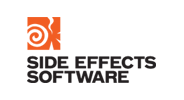
DGPis40:
Scientific Workshop & 40th Anniversary Reunion
Wednesday, May 28 - Friday, May 30, 2008
University of Toronto, Toronto, Ontario


Sponsors:
Session 4: Graphics and Animation 2
The past forty years of computer graphics and the forty to come
Eugene Fiume [Website]
 |
Professor, Department of Computer Science Co-director, Dynamic Graphics Project University of Toronto |
Location:
Room 1160, Bahen Centre, 40 St. George Street, University of Toronto
Abstract:
Like radio, television, the internet and the mobile telephone, computer
graphics is an invention that can be both magical and banal. In this
talk, I will focus on the magic, or in any event the scientific
questions underlying computer graphics whose answers can make graphics
seem magical. I will look at the fundamental results of the past 40
years and offer some thoughts on the problems to come, leading to
perhaps to most magical and banal of all open questions in computer
graphics: What makes an image convincing?
Bio:
Eugene Fiume is Professor and past Chair of the Department of Computer Science at the University of Toronto, where he also co-directs the Dynamic Graphics Project. Following his B.Math. degree from the University of Waterloo and M.Sc. and Ph.D. degrees from the University of Toronto, he was an NSERC Postdoctoral Fellow and Maitre Assistant at the University of Geneva, Switzerland. He was awarded an NSERC University Research Fellowship in 1987 and returned to the University of Toronto to a faculty position. He was Associate Director of the Computer Systems Research Institute, and was a Visiting Professor at the University of Grenoble, France. His past board memberships include the Scientific Advisory Board of GMD (Germany, now Fraunhofer); the Board of Directors of Truespectra Inc. (Toronto, acquired by Scene7), and CITO (Ottawa); the Advisory Boards of CastleHill Ventures, PlateSpin, BitFlash, TrueSpectra, OctigaBay Systems (acquired by Cray Systems); and the Executive Advisory Board of the IBM Lab in Toronto. He currently sits on the Board of Directors of Tucows Inc. (Toronto), and is on the Advisory Boards of the Max-Planck Center for Visual Computing and Communication (Germany), NGRAIN Corporation (Vancouver), View22 Technology Inc. (Richmond Hill), and the Department of CSE at the Hong Kong University of Science and Technology.
Eugene has participated in many task forces and reviews of research institutes around the world. He has had a long association with the computer graphics and electronic media industries in Canada and the U.S., notably with Alias|wavefront, where he was Director of Research and Usability Engineering while on leave from the university. He now works with several companies in an advisory capacity on both technological and business issues. He also works with venture capital companies on due diligence and strategy.
Eugene's research interests include most aspects of realistic computer graphics, including computer animation, modelling natural phenomena, and illumination, as well as strong interests in internet based imaging, image repositories, software systems and parallel algorithms. He has written two books and (co-)authored over 105 papers on these topics. Twelve doctoral students and 24 master's students have graduated under his supervision. He has won two teaching awards, as well as Innovation Awards from ITRC for research in computer graphics and Burroughs-Wellcome for biomedical research. He was also the Papers Chair for SIGGRAPH 2001, and is Chair of the SIGGRAPH Awards Committee.
His industrial interests include technology transfer in the Information Technology area, internet-based applications, digital media, wireless and multimedia systems, web-based services, large-scale computation, and the interaction of information technology and business.
On occasion, he manages to sneak a few hours of sleep.
My Lifelong Urge to Control (Virtual) People
Norman I. Badler [Website]
 |
Director, Center for Human Modeling and Simulation Professor, Computer and Information Science Department University of Pennsylvania |
Location:
Room 1160, Bahen Centre, 40 St. George Street, University of Toronto
Abstract:
For over three decades I have been fascinated by the innate human
ability to understand and carry out instructions. Along the way my
students and I have investigated many aspects of this control,
animation, and simulation problem. Besides studying structures
necessary to achieve this goal, we have investigated and contributed to
real-time inverse kinematics, strength-guided motion, locomotion,
communicative gesture generation, motion "qualities", face modeling, and
eye movement. At the core of our recent work is a Parameterized Action
Representation that helps bridge between Natural Language understanding
and computer animation. Our present focus is on animating large
communities of virtual people playing their individual roles or jobs in
a building or urban environment. I will focus on a broad spectrum of
simulation studies rather than address any particular topic in great depth.
Bio:
Norman I. Badler is a Professor of Computer and Information Science at
the University of Pennsylvania and has been on that faculty since 1974.
Active in computer graphics since 1968 with more than 200 technical
papers, his research focuses on virtual human autonomy, animation , and
computational connections between language and action. Badler received
the BA degree in Creative Studies Mathematics from the University of
California at Santa Barbara in 1970, the MSc in Mathematics in 1971, and
the Ph.D. in Computer Science in 1975, both from the University of
Toronto. He is Co-Editor of the Elsevier Journal Graphical Models. He
was the Cecilia Fitler Moore Department Chair of Computer and
Information Science from 1990-94. He directs the Center for Human
Modeling and Simulation. Among the Center's achievements are the human
modeling software system "Jack" that was the basis for a spin-off
company in 1996; the evolved software
is now marketed by Siemens. He is the Director of the Digital Media
Design undergraduate degree program in Computer Science at Penn. During
2001-2005 he was also the Associate Dean of the School of Engineering
and Applied Science.






